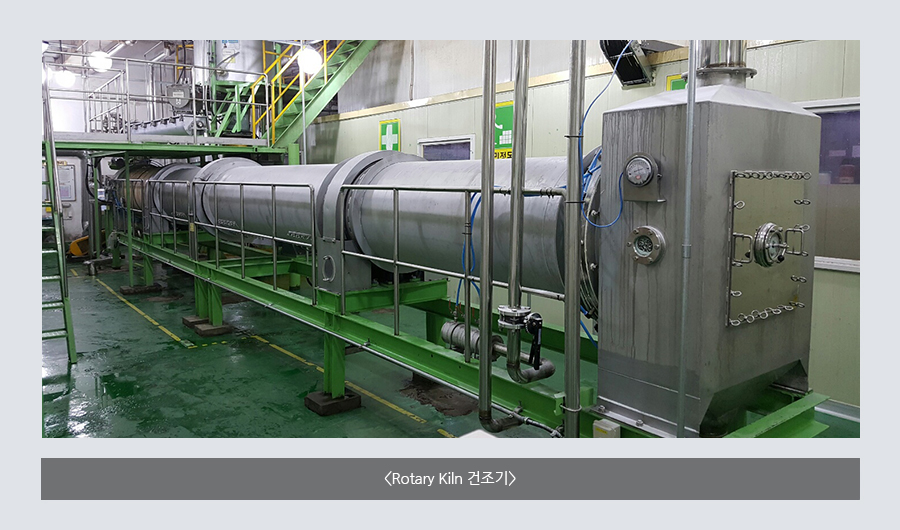- Food & Beverage/Pharmaceutical
- Energy Saving System
- Wastewater Treatment System
- Water & Environment Plant
- Overview
- Evaporation/Crystallization System
- Distillation System
- Drying System
- Zero Liquid Discharge System
- Project Achievement
Indirect Heating Dryer
Dryer operated by indirect heating span. by contacting the outer surface of steam tube inside drier
Features
- · Less energy consumption due to high heat insulation effect from drying by conductive and radiant heat
- · due to the characteristics of direct heating dryier, can minimize the size of air pollution prevention facility
- · Less thermal denaturation by contacting heat source of relatively low temperature
- · Dry various products and volumes according to application of diverse supplementary equipment
Direct Heating Dryer
Dryer operated in direct contact of heated air and wet product
Features
- · Products are dried by momentary contact while being transported within heat source (air flow) for several seconds
- · Fast heat delivery rate from heat source (air flow) and effective in evaporation of moisture in solid particles
- · Suitable for products with low heat denaturalization
- · Can save energy by recycling waste heat
Comparison of Direct & Indirect Heating Dryers
| Dryer | Features | Application |
|---|---|---|
|
|
|
|
|
|





